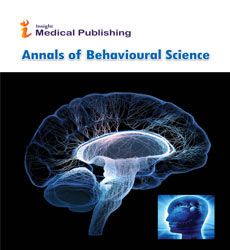Anxiety Disorder Patients: Controlling For the Presence and Severity of Pretreatment Symptoms
Julia Paige *
Department of Epidemiology, College of Public Health & Health Professions, University of Florida, Gainesville, USA
- *Corresponding Author:
- Julia Paige
Department of Epidemiology, College of Public Health & Health Professions, University of Florida, Gainesville, USA
E-mail: juliap@gmail.com
Received date: October 24, 2022, Manuscript No. IPABS-22-14908; Editor assigned date: October 26, 2022, PreQC No. IPABS-22-14908(PQ); Reviewed date: November 07, 2022, QC No IPABS-22-14908; Revised date: November 17, 2022, Manuscript No. IPABS-22-14908 (R); Published date: November 24, 2022, DOI: 10.36648/2471-7975.8.7.76
Citation: Paige J (2022) Anxiety Disorder Patients: Controlling For the Presence and Severity of Pretreatment Symptoms. Ann of Behave Sci Vol. 8 No.7:76
Description
This study sought to replicate the findings of Blakey, Abramowitz, Reuman, Leonard, and Riemann (2017), who found that higher Anxiety Sensitivity (AS) was associated with a worse treatment outcome in 187 CBT-treated OCD patients. Additionally, we investigated whether AS could predict treatment duration and whether this finding is present in other anxiety-related disorders. We hypothesized that individuals with higher AS would have a worse treatment outcome and longer treatment duration if exposure assignments were more challenging. These hypotheses were tested on 110 OCD patients and 285 mixed anxiety disorder patients, controlling for the presence and severity of pretreatment symptoms. We were unable to replicate the previous results.AS did not contribute to the prediction of treatment outcome or duration, as revealed by hierarchical linear regressions; neither in OCD nor the other mental illnesses. The results are critically examined. It is proposed that Post-Event Processing (PEP) plays a significant role in the persistence of social anxiety symptoms. The general PEP tendencies can be treated, according to previous research. However, it is still unclear how treatment for social anxiety disorder affects momentary PEP after social interactions. The current study's objective was to investigate how treatment-related changes in both momentary and general PEP predict treatment outcome.
Anxiety on Cognition
Because the participant must make additional moves to replicate the desired end-state configuration, these proponent moves are problematic and may ultimately result in an incorrect solution to the individual tower problem. Because the participant must flexibly move between sub goals or achieve the configuration, mental flexibility or shifting may also be important. Regardless of age, lower planning performance was linked to higher anxiety ratings. Only anxiety was significant when directly comparing the predictive value of depression and anxiety on cognition. As a result, there was a negative correlation between cognitive functioning and subclinical levels of anxiety, regardless of age. The evaluation and identification of potential deficits in anxious children may be a significant step toward comprehending the connection between planning ability and anxiety disorders. As a result, the study's objective was to assess how well children and adolescents with anxiety disorders performed on planning tasks. We hypothesized that children with anxiety disorders would perform worse on the healthy control subjects. The psychiatric disorder known as Generalized Anxiety Disorder (GAD) is common, incapacitating, and undertreated. We looked into whether a computerized home treatment program that treats GAD symptoms effectively could be offered.
Hamilton Anxiety Rating Scale
We used a randomized control trial to compare three active groups to an assessment-only control group: a group that received computerized sequenced Attention Bias Modification (ABM) followed by Applied Relaxation psych education (AR-pe), a group that received AR-pe in reverse order and ABM simultaneously, and a group that received ABM and AR-pe simultaneously. There were 169 adult participants who had been diagnosed with GAD. Over the course of 12 weeks, we required participants to complete up to 24 30-minute sessions of an at-home computerized treatment program. Assessments of attention bias and 24 brief assessment questionnaires were given to the control group. The Hamilton Anxiety Rating Scale (HAM-A) measures anxiety symptoms more quickly in the intent-to-treat analysis groups that received active training than in the Clinical Monitoring (CM) control group over time. Anxiety levels improved in both sequenced and simultaneous groups, according to follow-up analyses, but the simultaneous group did not outperform the control group. For people with GAD who lack access to resources or are otherwise unable to seek out available treatments that require engagement outside of the home, the findings suggest that sequenced delivery of ABM and AR may be a viable home-based treatment option. The study included 194 consecutive rosacea patients as well as 194 age- and sex-matched controls. The National Rosacea Society Ethics Committee's criteria were used to determine the severity of rosacea in the patients. The 7-item Generalized Anxiety Disorder scale was used to evaluate patients and controls, and the Generalized Anxiety Disorder-Adult scale was used to measure severity. The purpose of this study was to investigate the role that implicitly measured associations-hereafter referred to as associations—play in adolescents' math anxiety. Independent of explicit measures, previous research has demonstrated that associations predicted behavior. Math-anxiety associations were examined in this study to see if they predicted math behavior and state math anxiety in addition to being independent of explicitly measured math anxiety. Math-anxiety associations' domain specificity for predicting math behavior was also investigated. Three domains were used to evaluate adolescents' anxiety associations and self-reported anxiety: math nervousness, unknown dialect (English) tension, and quality uneasiness.
Open Access Journals
- Aquaculture & Veterinary Science
- Chemistry & Chemical Sciences
- Clinical Sciences
- Engineering
- General Science
- Genetics & Molecular Biology
- Health Care & Nursing
- Immunology & Microbiology
- Materials Science
- Mathematics & Physics
- Medical Sciences
- Neurology & Psychiatry
- Oncology & Cancer Science
- Pharmaceutical Sciences
